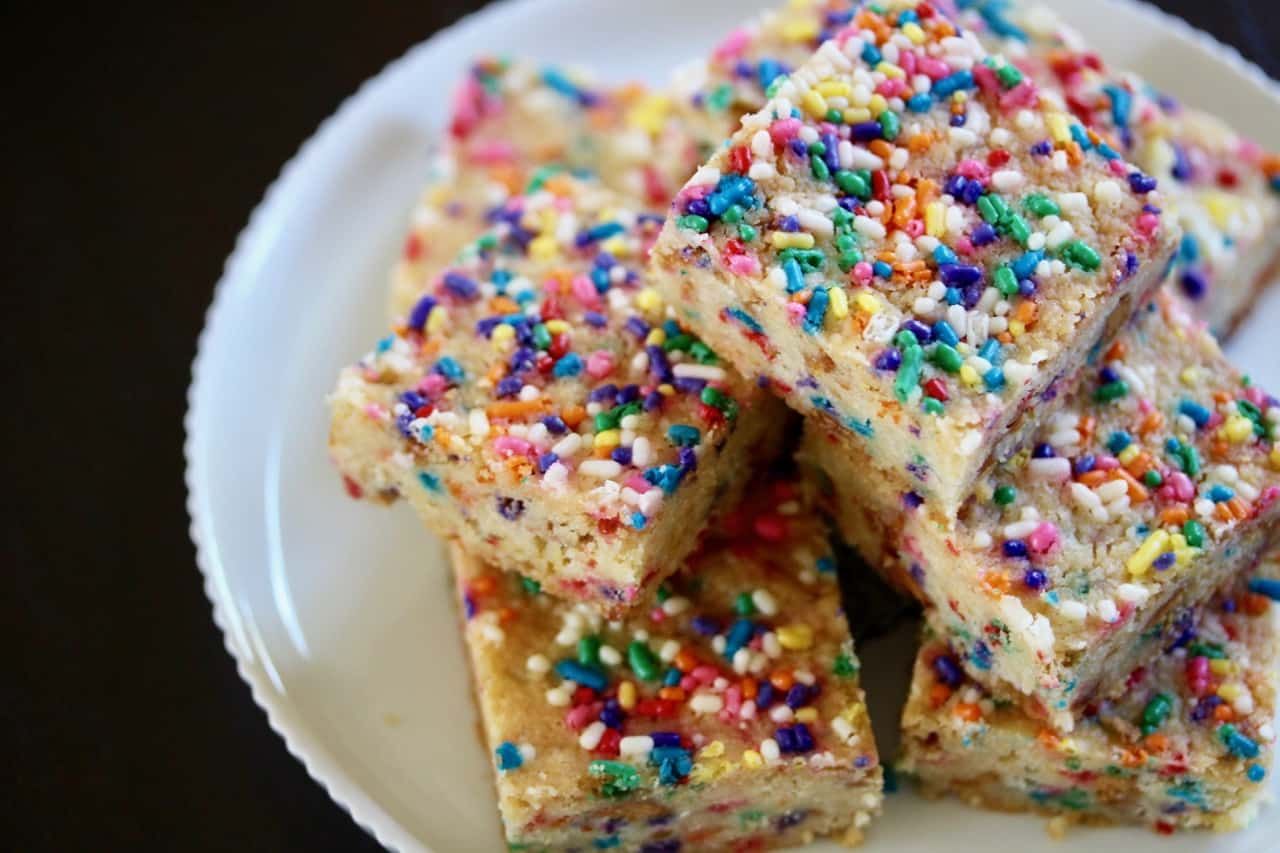
I’m kind of on a shortbread bender right now, guys. Ever since I started playing around with variations on Ovenly‘s Buttery Shortbread recipe, it’s all I can think about– work? sleep? gym? NO– only shortbread. And I’m just fine going about my day believing this is normal, adaptive, healthy behavior– please don’t burst my bubble. 😉 Back in the spring, when I finally located the May/June issue of Bake from Scratch after visiting four stores, I was entranced by the Sprinkle Bread on the cover (me and everyone else), and while I plan to make this at some point soon, I knew that my more immediate mission would be to make a “birthday” version of Ovenly shortbread, and thus were born these White Chocolate Birthday Shortbread Bars. Because don’t we all need more sprinkles right now, I mean really?
When I adapted the base shortbread recipe, I reduced the butter a little bit, and I doubled the recipe so I could make it in a 9×13″ pan and get thicker shortbread– in bar form, essentially. I found that I get a better texture when I make the double-batch; for some reason, in a smaller pan I can’t seem to replicate the slightly denser, slightly under-baked, slightly chewy texture that I get when they bake in the larger pan. They exist somewhere in the realm between traditional shortbread and blondies, and this is a good thing. AND! They develop a slightly caramelized layer on the bottom, which can only make your day better as soon as it melts in your mouth. However, you can absolutely cut the recipe in half and use an 8×8″ pan like Ovenly does in their cookbook. Because I had been working on multiple flavor variations simultaneously, I was making smaller batches (Irish butter doesn’t grow on trees, after all), but my bars were coming out a little more flaky/crumbly/delicate (and without the caramelized bottom 🙁 ), so I went back to the larger size pan. Not that this lighter texture is bad by any means, but I found the double-batch texture to be really special.
A few recipe notes:
- The butter temperature is very important– make sure your butter is very cold (straight from the fridge to the mixer bowl), as this will affect the texture of your baked bars.
- Use the best butter that you can afford, since butter is the starring flavor in shortbread. I use Irish Kerrygold unsalted butter, which is a cultured European-style butter with higher fat content (i.e. higher deliciousness) than American sweet cream butter.
- I added vanilla to this recipe, and you can use either pure vanilla extract or clear artificial vanilla. Every time I see the words ‘artificial’ and ‘vanilla’ in the same sentence, I die a little inside, but there is an actual reason to use it here. “Birthday” desserts are meant to emulate the flavor of boxed funfetti cake mix, which is made with fake vanilla flavor, not the real thing. For the nostalgia factor, you can go that direction, or feel free to just use pure vanilla.
- More on shortbread texture preferences here— feel free to adapt the baking temperature similarly in this recipe.
- I topped my bars with 3 tablespoons of birthday sprinkles, which I felt was a little more sprinkle density than I had envisioned. This quantity is really up to you; I would personally go with 2 tablespoons in the future. Feel free to use more or less, or zero extra sprinkles, or even a full-on blanket if you want this effect.
- If you want to bake these for a festive occasion other than a birthday, you can easily customize them for St. Patrick’s Day, Valentine’s Day, Halloween, 4th of July, etc. by using the appropriate holiday-specific colors.
Every time I make this shortbread, I’m amazed at how quick and easy it is to pull together. Honestly, the most time-consuming thing is evening out the surface after pressing the dough into the pan… and that’s just because Baking OCD won’t let me leave it a little bumpy. To the dough base I simply added birthday sprinkles and chopped white chocolate along with the flour, as well as a little vanilla with the wet ingredients. Bonus: I happily found out that the white chocolate pieces caramelize in the oven! It’s like you get free Valrhona Dulcey just for playing. Also, feel free to omit the sprinkles on the top and instead, you can recklessly slather the top of the baked shortbread slab with cream cheese frosting if you prefer to live a little more dangerously.
White Chocolate Birthday Shortbread Bars
Adapted from Ovenly: Sweet and Salty Recipes from New York’s Most Creative Bakery by Erin Patinkin & Agatha Kulaga
Yields 24 squares
For the shortbread:
- 4 cups (480g) all-purpose flour
- ⅔ cup (120g) good-quality white chocolate, roughly chopped
- ½ cup (100g) + 2 tablespoons colored sprinkles, divided
- 4 teaspoons kosher salt
- 18 ounces (4½ sticks/508g/36 tablespoons) cold unsalted butter, preferably cultured European-style, cut into cubes
- 1 cup (200g) granulated sugar
- 2 teaspoons pure vanilla extract or clear artificial vanilla (see note above)
Preheat an oven to 300°F and place a rack in the center position. Line a 9×13″ metal baking pan with parchment paper so that it hangs over all the sides.
Whisk together the flour, chopped white chocolate, ½ cup (100g) colored sprinkles, and salt in a medium mixing bowl.
Place the cold butter pieces, sugar, and vanilla extract in the bowl of a stand mixer fitted with the paddle attachment. Beat on medium-low for several seconds, then turn up the speed to medium and mix until the sugar is incorporated, but the butter is not whipped; you want it to be barely fluffy. It may get clumpy on the beater paddle since the butter is not softened, in which case stop the mixer and scrape it down as needed. Active mixing time should be about 2 minutes.
Add half of the flour mixture and mix on the lowest speed until most of the dry ingredients have been absorbed, then add the second half and mix. If you have loose bits of flour/white chocolate on the bottom of the bowl, keep mixing for a few extra seconds until they get picked up, though be careful not to overbeat. Alternatively, remove the bowl from the mixer and fold the loose bits up from the bottom to the top with a rubber spatula. Put the bowl back on the mixer and beat on low for a few seconds until all the dry ingredients have been incorporated; do not overmix. You can also do this by hand.
The dough should be cool to the touch and quite stiff. Transfer it to the prepared baking pan in a big mound, then gently flatten it with your hands and spread it evenly to the edges and corners. It does get sticky, and there are two things I would suggest to avoid this: 1) put on food-grade latex gloves to press the dough into the pan, or 2) press down the dough most of the way, then place a big piece of plastic wrap directly on the surface and use a mini rolling pin or a straight glass to flatten the dough evenly. I used a combination of both steps to get the flattest possible surface.
If the dough softens too much during the previous step, place the pan in the fridge for about 30-60 minutes, or until the dough firms up. Scatter the remaining sprinkles over the surface, then transfer the pan to the oven and bake for 45 minutes, rotating the pan halfway through. The butter will still be bubbling. Increase the oven temperature to 325°F and continue baking for another 25 minutes.
Set the pan over a metal cooling rack and let the shortbread cool completely in the pan. If using cream cheese frosting, cover the slab in a swirly layer (top with sprinkles if desired) and refrigerate the pan for 20 minutes before cutting. Pull the shortbread up and out of the pan using the overhanging parchment paper.
Cut the shortbread into squares, triangles, or any shape you like– you can even use a sturdy cookie cutter to cut out shapes (and feast on the scraps). Store the shortbread in an airtight container for up to a few weeks, or freeze for up to a few months. (If topped with frosting, store them in the fridge for up to a few days.)
© Dafna Adler & Stellina Sweets, 2017.





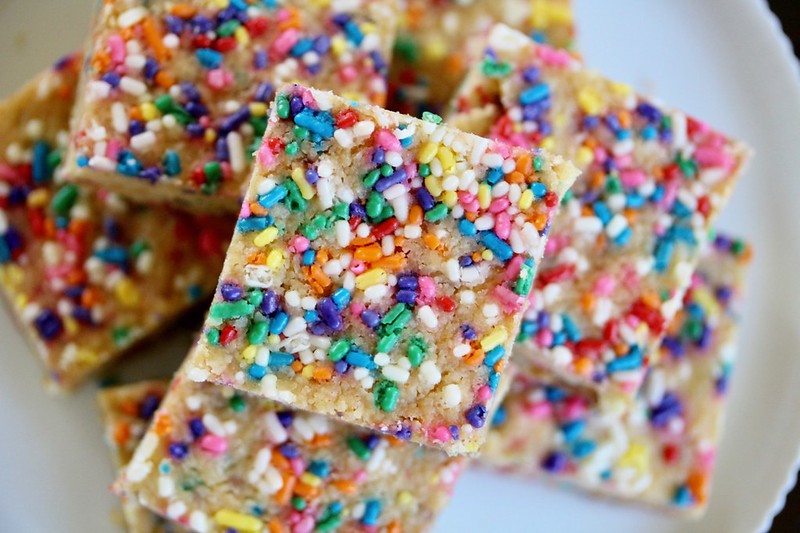
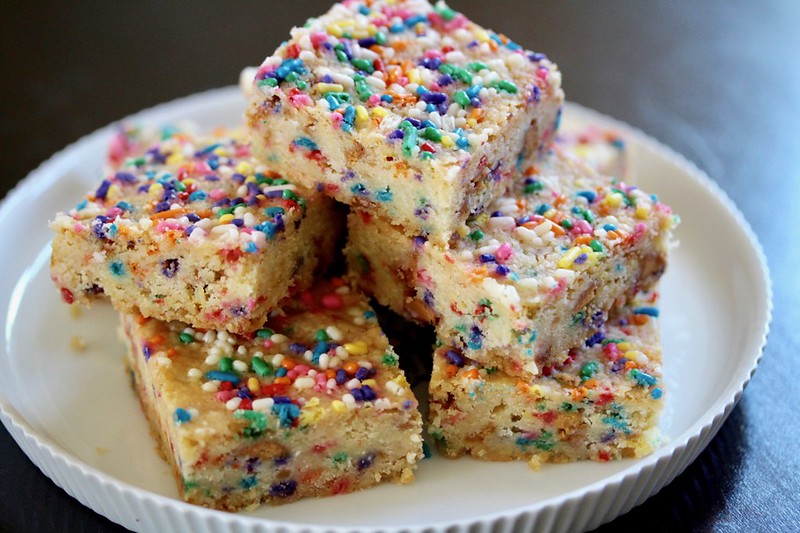


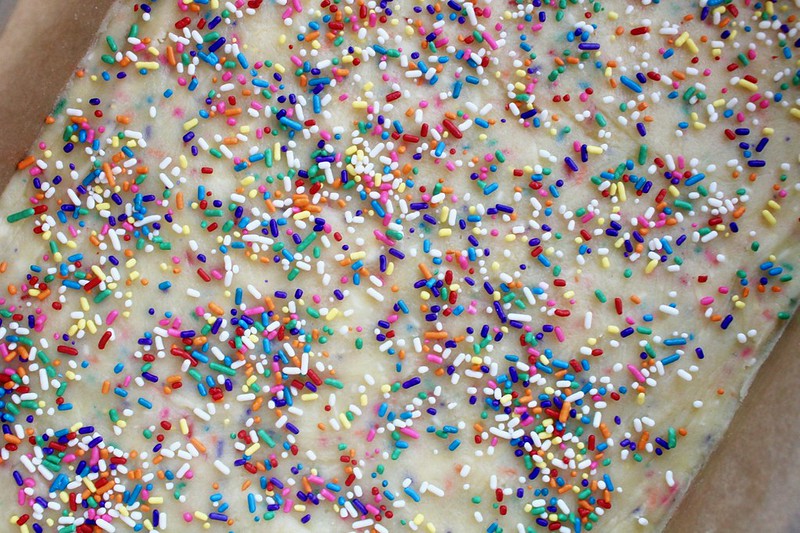

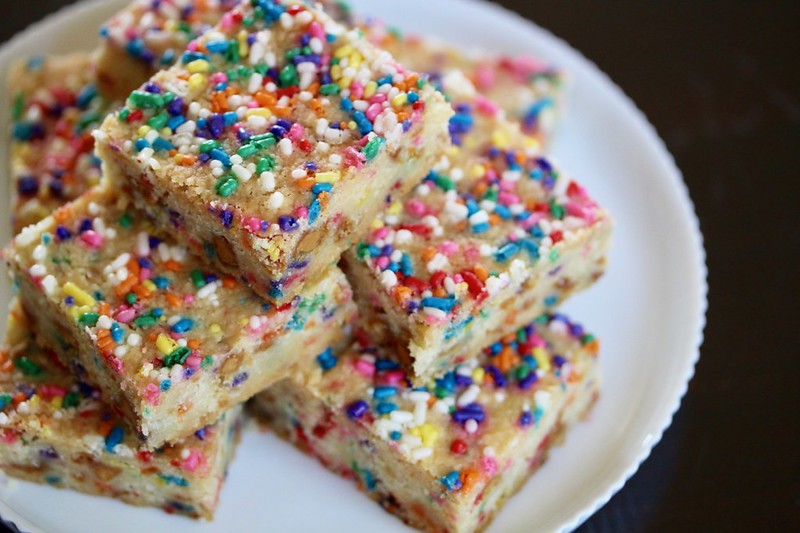


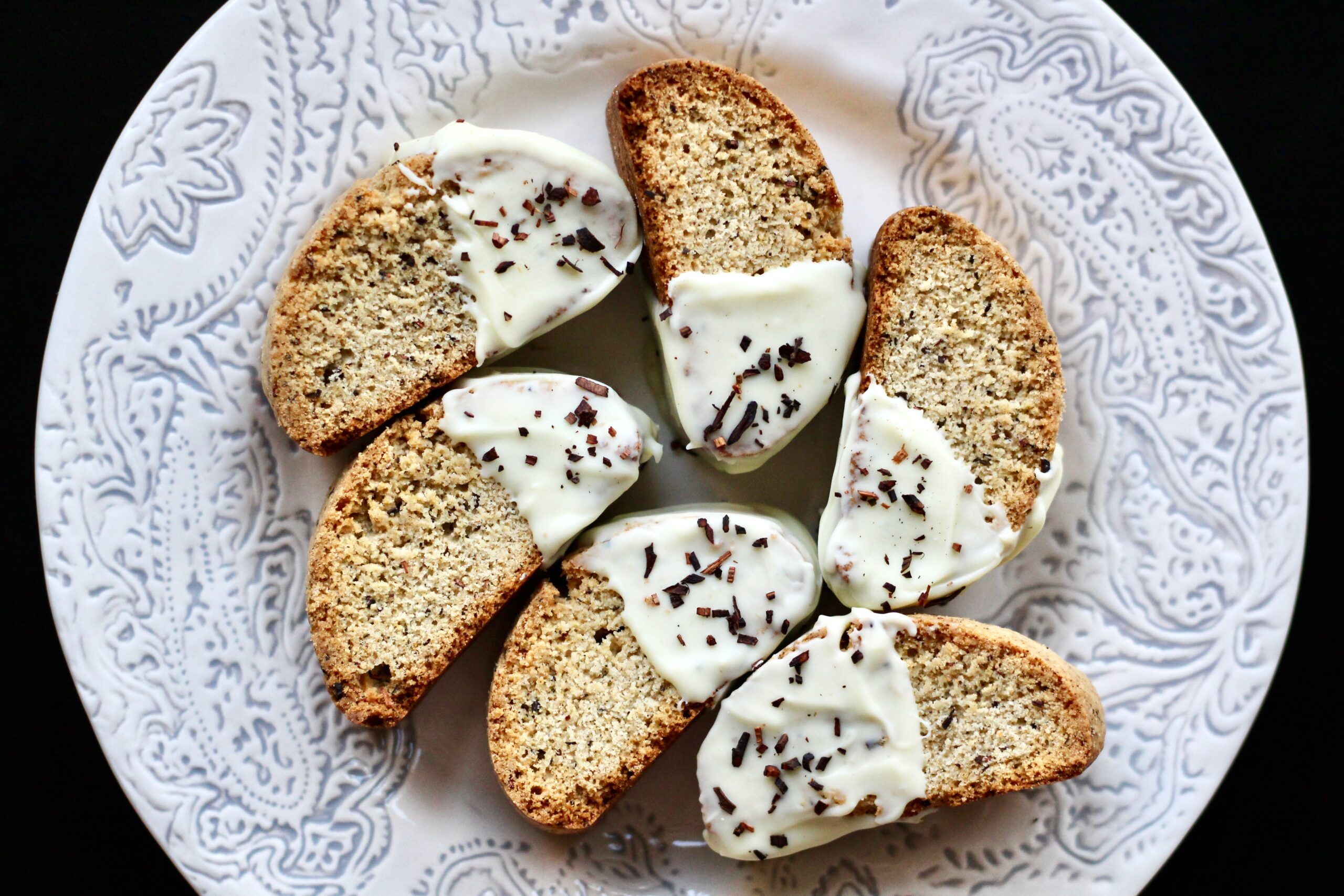
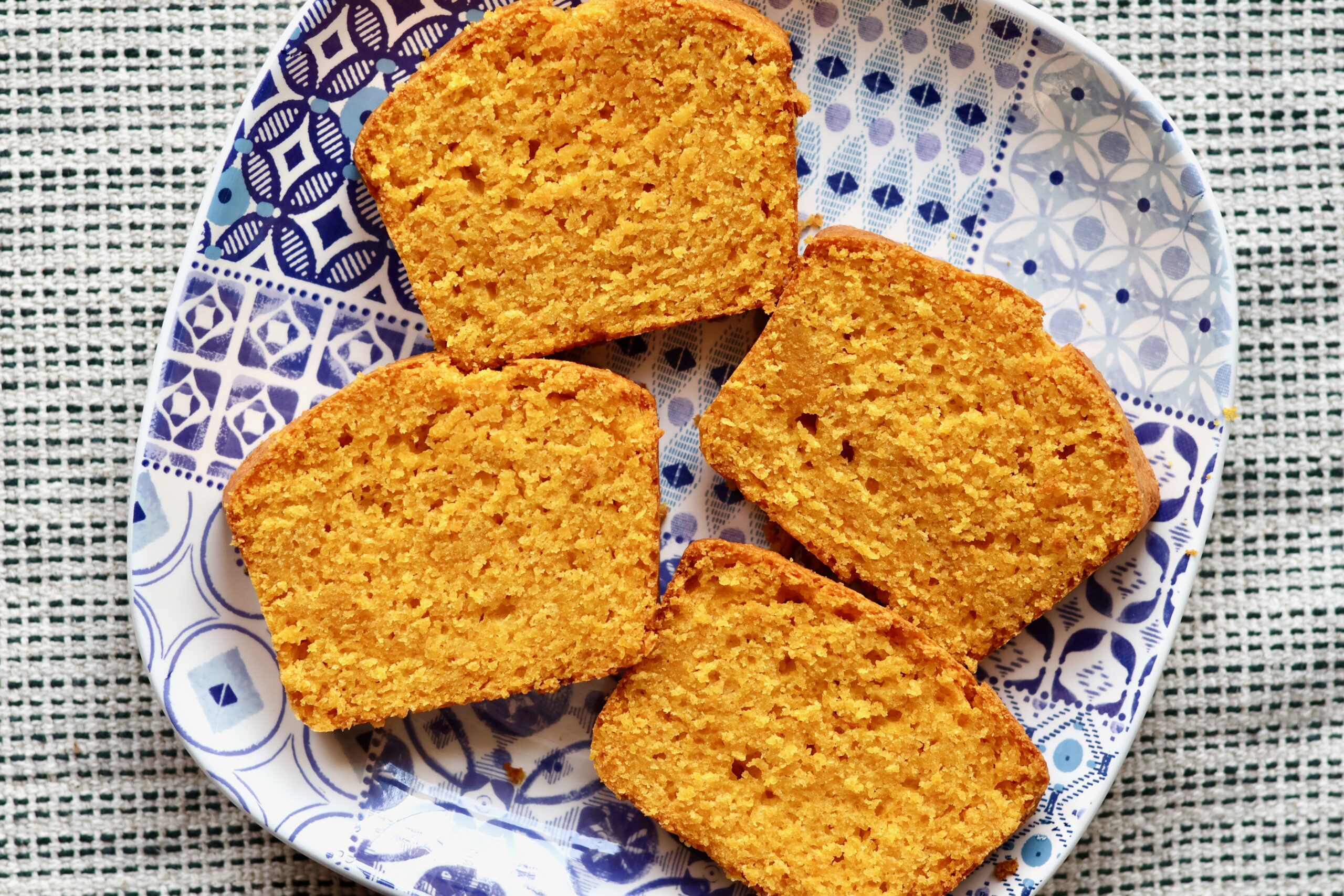
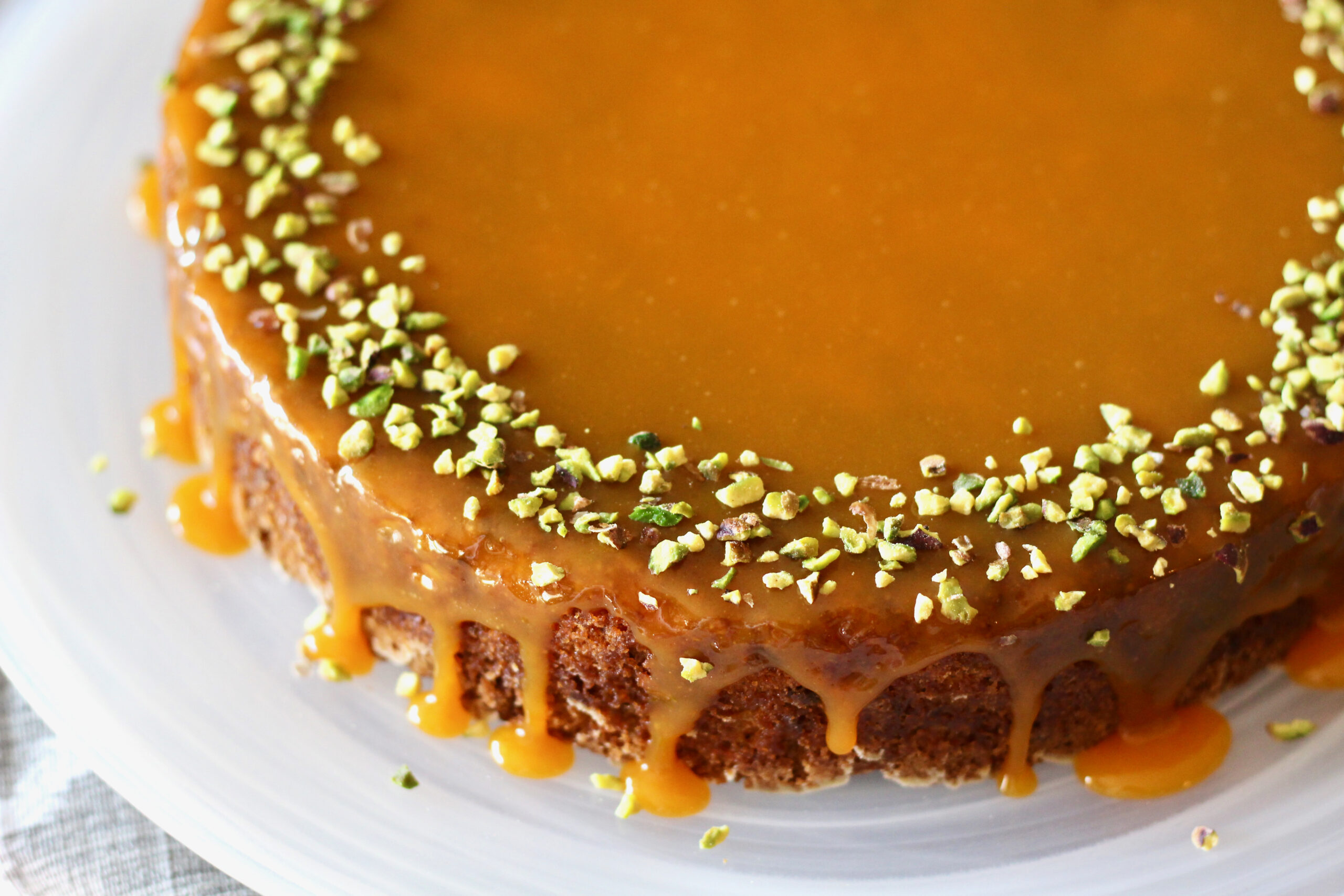
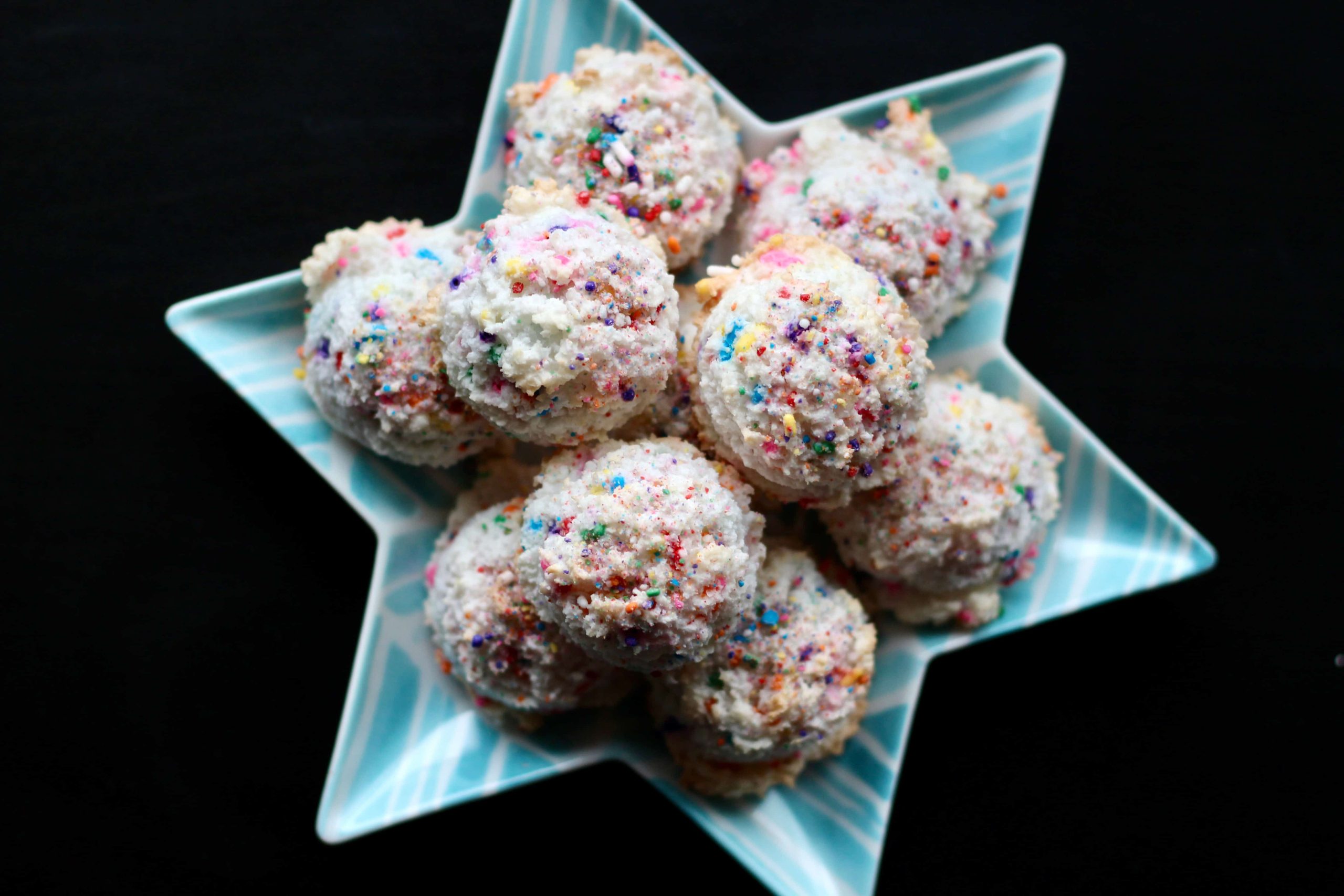
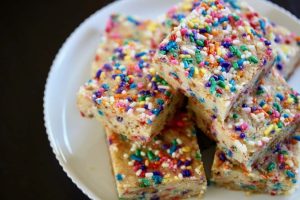

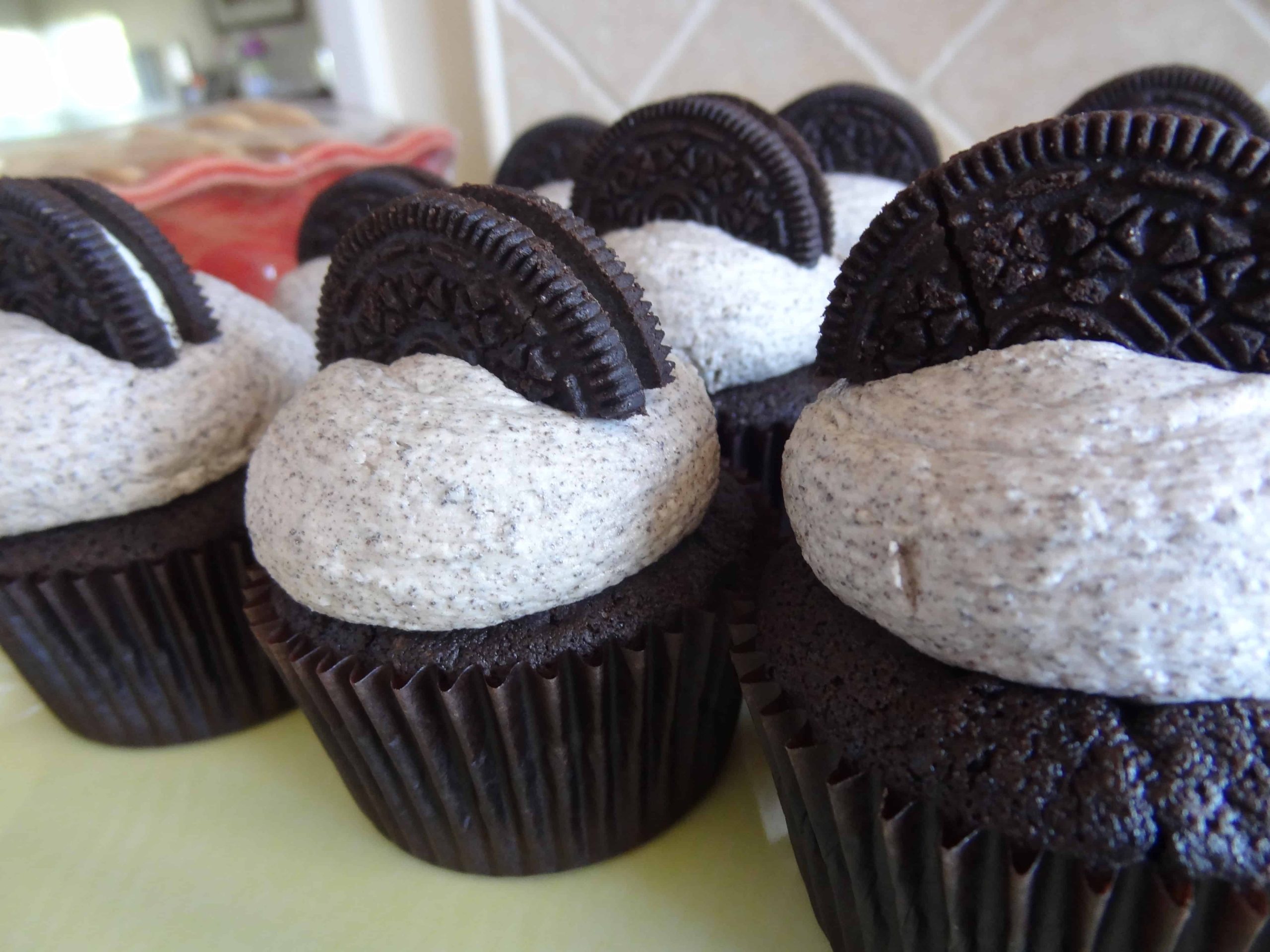

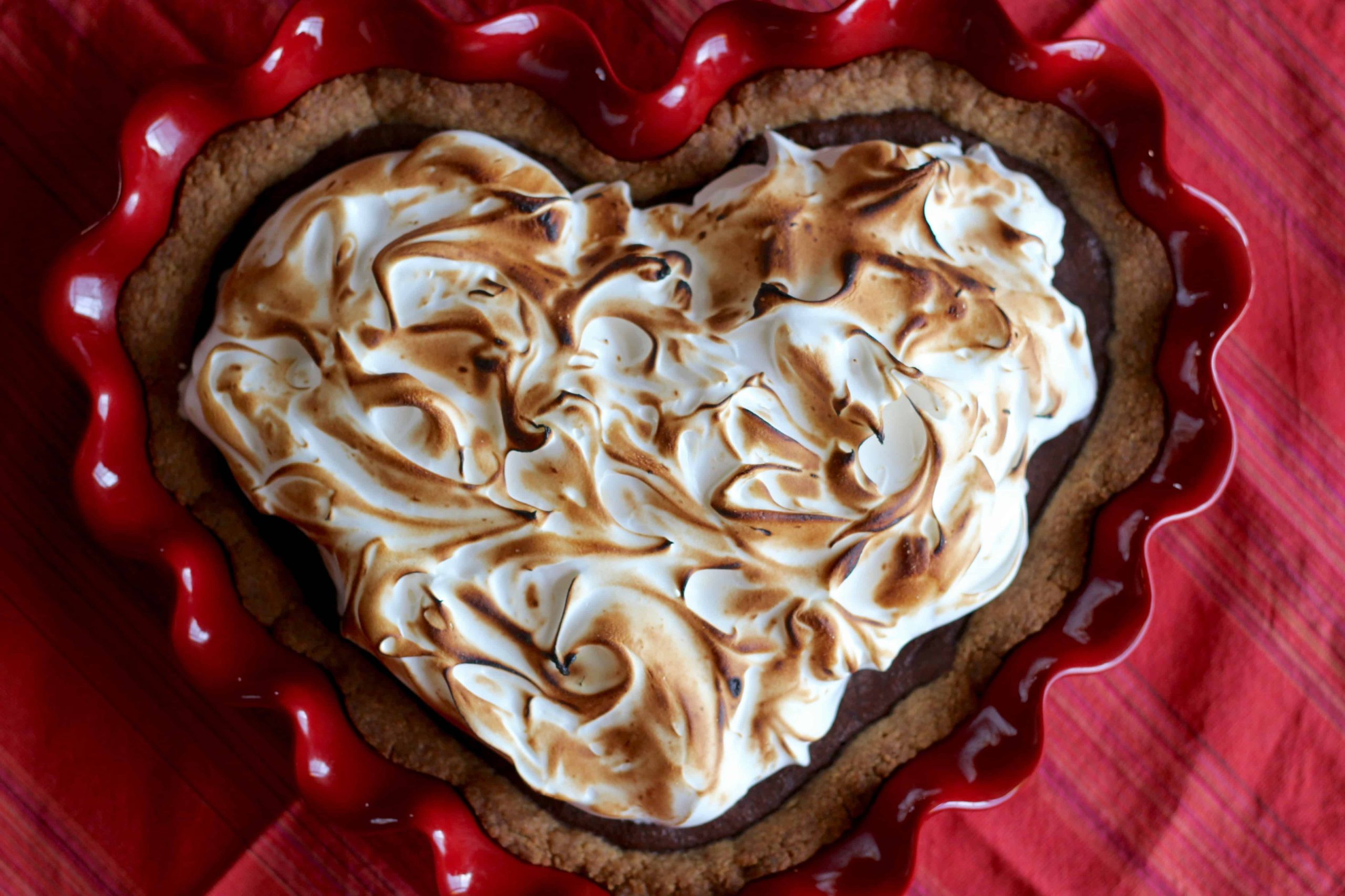
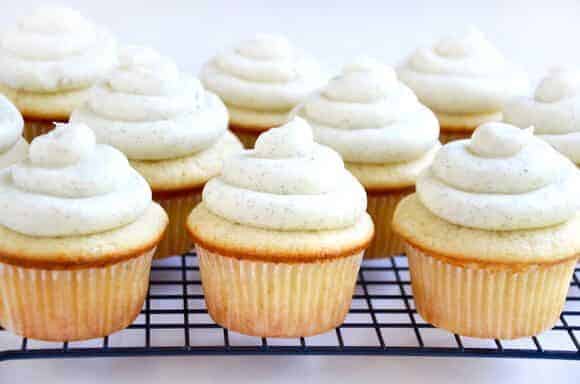
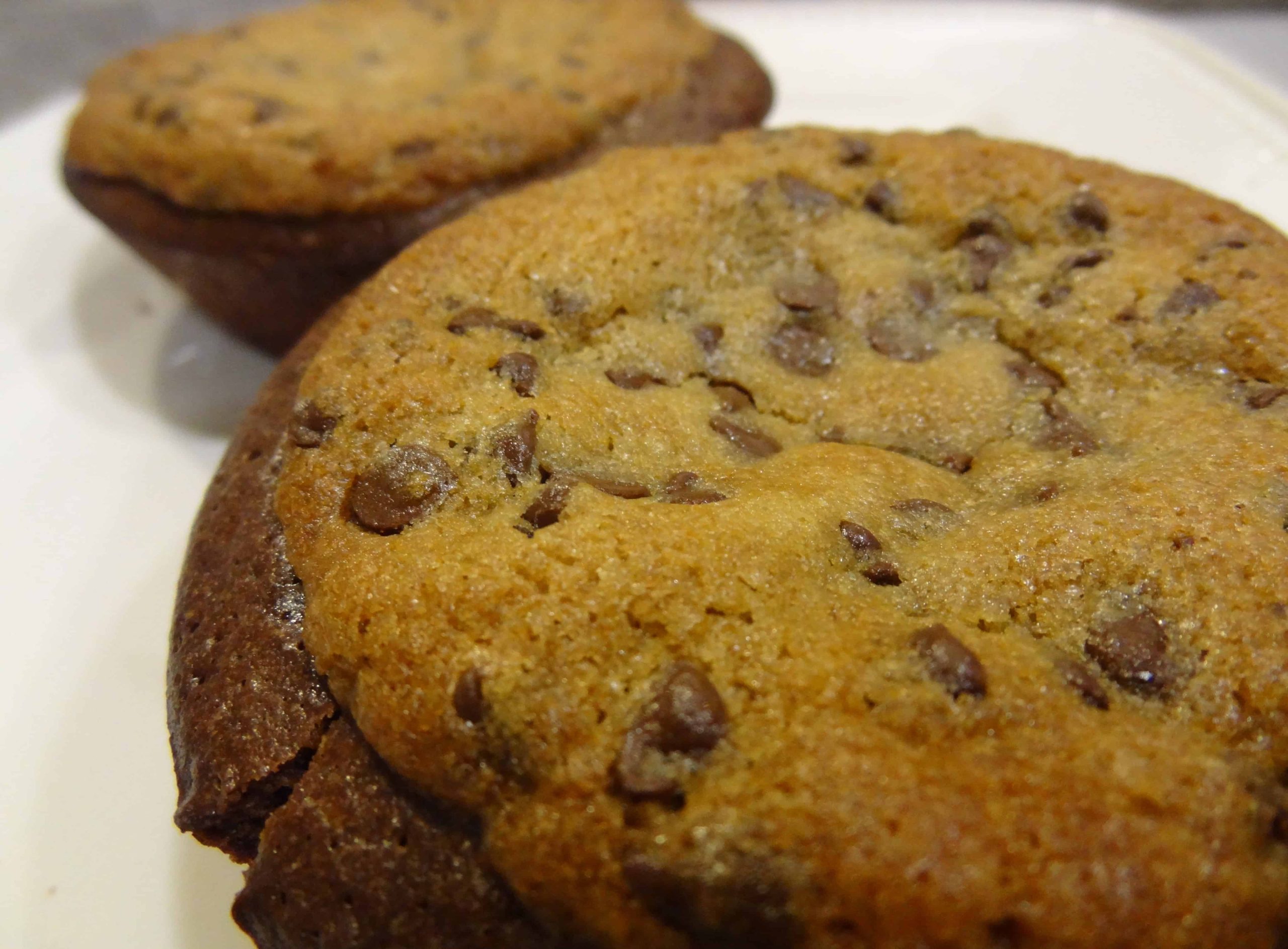
One Response